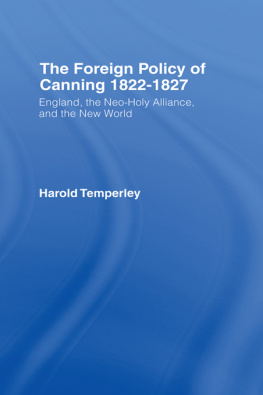Routledge Revivals
Navies and Foreign Policy
First published in 1977, this study offers a comprehensive, systematic and integrated survey of the important relationship between navies and the making and execution of foreign policy. Ken Booth explains the functions navies can perform in both war and peace, the influence they have on particular situations, and how the relevant organisations can affect the character of naval actions. Ultimately, navies are regarded as indispensable instruments of the state by a number of countries, whilst all countries with a coast find some need to threaten a degree of force at sea. This book provides students and academics with the intellectual framework with which to assess the changing character of the navy.
Navies and Foreign Policy
Ken Booth
First published in 1977
by Croom Helm Ltd
This edition first published in 2014 by Routledge
2 Park Square, Milton Park, Abingdon, Oxon, OX14 4RN
and by Routledge
711 Third Avenue, New York, NY 10017
Routledge is an imprint of the Taylor & Francis Group, an informa business
1977 Ken Booth
The right of Ken Booth to be identified as author of this work has been asserted by him in accordance with sections 77 and 78 of the Copyright, Designs and Patents Act 1988.
All rights reserved. No part of this book may be reprinted or reproduced or utilised in any form or by any electronic, mechanical, or other means, now known or hereafter invented, including photocopying and recording, or in any information storage or retrieval system, without permission in writing from the publishers.
Publishers Note
The publisher has gone to great lengths to ensure the quality of this reprint but points out that some imperfections in the original copies may be apparent.
Disclaimer
The publisher has made every effort to trace copyright holders and welcomes correspondence from those they have been unable to contact.
A Library of Congress record exists under LC control number: 76028612
ISBN 13: 978-1-138-78168-9 (hbk)
ISBN 13: 978-1-315-76964-6 (ebk)
NAVIES AND FOREIGN POLICY
K. BOOTH
1977 K. Booth
Croom Helm Ltd
2-10 St Johns Road, London SW11
ISBN 0856643238
Published in the United States by
Crane, Russak & Company Inc.,
52 Vanderbilt Avenue
New York, N.Y. 10017
ISBN 0844810134
Library of Congress Catalog Card No. 7628612
CONTENTS
For Robert and Thomas
PREFACE
This book is designed as a guide to the specialised study of an instrument of policy, naval power, which historically has played an important part in the foreign policies of most major states. For certain countries this relationship has always been closely intertwined. The relationship between navies and foreign policy is not presently what it was, but then it never has been in the twentieth century. The relationship is changing and becoming more complex, but it is not becoming obsolete. Navies remain an instrument of statecraft. At the same time, they also consume enormous amounts of money, employ several million people throughout the world, control terrible destructive potential, and operate in that watery two-thirds of the earths surface which is increasingly a major international issue area. We live in more complicated times: they demand more complicated thinking. This book is a preliminary step towards that end. The book is neither a survey of current naval affairs nor a work advocating the policies which governments should pursue: rather, it is an introduction to thinking about the manifold interrelationships between navies and foreign policy. For all concerned, initially at least, its not what you do, its the way that you think about it.
The book has been divided into two parts. Part One examines the variety of ways in which navies can be instruments of and influences on foreign policy. Part Two examines the major factors affecting the character of naval policies. In each part the aim has been to suggest coherent frameworks for analysis, to indicate relevant literature, and to submit a variety of useful propositions, perspectives, approaches and rules-of-thumb. The book is made up of large maps and local guides, sign-posts and check-lists, advice and some equipment which might help the student of naval affairs to begin to find his way around the subject, to travel hopefully, and to discover. The message evident throughout the book is the need to rub together history and theory, and academics and naval professionals in order to sharpen our tools for dealing with this complex and significant area of public policy.
Several explanatory points should be made at the outset. (1) Since so much knowledge is fragmented and specialised, and since there are so few integrated individual approaches to this subject, comprehensiveness has been chosen rather than depth. This means, for example, that the chapter on naval capabilities is not stuffed with up-to-date information (which in any case would date) but instead attempts to introduce the reader to the range of factors which he might consider when speculating about who can do what. (2) The book has relatively little on war at sea, though there are frequent references to its possibility. This is because the major business of navies in the second half of the 1970s and beyond is not the fighting of nuclear-age Trafalgars, but in using warships to support policy by less drastic methods. (3) Most of the book is about the largest navies rather than small or even medium ones. The latter are not ignored, but it is only the greatest navies which have important foreign policy implications. (4) The focus is on navies and naval affairs, rather than the wider idea of maritime policy. There is, of course, much more to the use of the sea than is encompassed in the idea of naval policy. But the narrower focus provides a definite theme, and, as the reader will discover, no shortage of material. It is stressed throughout the book that the naval focus can only be properly understood in the widest context, which means not only maritime affairs, but also what happens on land.
It is hoped that this comprehensive treatment will help the student of the subject to have a better grasp of the whole, and will encourage him to dig deeper into its specific parts. The study of naval policy has been the Cinderella of strategic studies. It has been badly neglected. The student of strategy has many tools to help him think about the almost unthinkable use of the most destructive weapons we have: ironically, he has far fewer tools to help him think about the many thinkable uses of modern naval power.
In the writings on naval affairs in the past twenty years or so some ground has been tilled, in one way or another, but it could all be tilled yet more deeply, and produce richer fruit. In the age of Mahan, wars, navies and international relations all appeared relatively more simple than they do today. The demands on those who wrote about navies and foreign policy were correspondingly less. Today, writers about this subject face a world in which war, navies and international relations appear very much more complex, in their human, political, economic and technological dimensions. It is only when our minds are clearer on some of the issues discussed in this book that we can begin to face the growing complexity of the subject with more confidence, and so begin to develop more rigorous and perceptive approaches to the study of navies and foreign policy. Armed with these we will have the basis for better understanding, comparison and forecasting.














